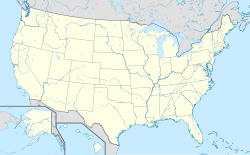Map of a Reconnaissance of the Black Hills, July and August, 1874, With troops under command of Lt. Col. G. A. Custer, 7th Cavalry, by Capt. Wm Ludlow Corps of Engineers.
Größe:
4000 x 4764 Pixel (2917942 Bytes)
Beschreibung:
George Armstrong Custer and William Ludlow's seminal 1874 map of the Black Hills, Dakota Territory, covering from the Missouri to the Powder River and from the 47th to the 43rd parallel. In 1874 one thousand cavalrymen under the command of Lt. Col. George Armstrong Custer moved into the Black Hills region of Dakota Territory. Though officially American Indian territory according to the 1868 Treaty of Laramie, rumors had been circulating since the early 19th century that this region harbored rich deposits of gold. Custer and his men were sent to investigate. With Custer was William Ludlow, an officer of the Army Corps of Engineers ( inheritor of the legacy left by the Topographical Engineers ) whose commission was to explore and survey the region, identifying in the process if the rumored gold did indeed exist. Ludlow and Custer traveled west from Fort Lincoln on the Missouri River (near Bismarck) to the Powder River, thence north and South into the Black Hills. Their path, many camp sites, and survey triangulation points are documented throughout. Ludlow compounded his work by attaching it to pre-existing exploratory survey work performed by Reynolds in 1859-60, Warren in 1857, and Sully in 1864, and to the Northern Pacific Railroad Surveys performed in 1871 and 1872, all of which are noted. As a whole this map is full of fascinating detail, which lead map historian C. I. Wheat to call it a most interesting map. Throughout Ludlow offers commentary on the territory such as High hills heavily timbered Water and grass abundant, grass and water good, bad lands and soil and loose dry clay. In addition to his scientific and geological notations, Ludlow also offers some interesting historical commentary such identifying the site where they killed the Rees and where the sick man was killed. these both possibly reference events on the 1871 Pacific Railroad Survey wherein friendly Indian guides of the Rees tribe were killed by raiding Sioux. Ultimately, Custer and his men did find gold in the Black Hills, leading to the 1876 Black Hills Gold Rush. Completely disregarding the Treaty of Laramie, gold hungry settlers rushed into the region, coming into immediate conflict with the warlike Sioux. Custer's foolish attack on the Sioux encampment and the subsequent massacre at Little Big Horn were a direct result of this conflict. Ultimately the Black Hills Gold discovery turned out to be one of the greatest gold strikes in history, producing 10% of the world's gold supply for the next 125 years. Published along with two other maps in Ludlow's 1874 Report of a Reconnaissance of the Black Hills .
Kommentar zur Lizenz:
|
Dies ist eine originalgetreue fotografische Reproduktion eines zweidimensionalen Kunstwerks. Das Kunstwerk an sich ist aus dem folgenden Grund gemeinfrei:
| Public domainPublic domainfalsefalse
|

|
Dieses Werk ist gemeinfrei, weil seine urheberrechtliche Schutzfrist abgelaufen ist.
Dies gilt für das Herkunftsland des Werks und alle weiteren Staaten mit einer gesetzlichen Schutzfrist von 70 oder weniger Jahren nach dem Tod des Urhebers.
 Parallel zu dieser Lizenz muss auch ein Lizenzbaustein für die United States public domain gesetzt werden, um anzuzeigen, dass dieses Werk auch in den Vereinigten Staaten gemeinfrei ist. Beachte bitte auch, dass einige wenige Länder eine Schutzfrist von mehr als 70 Jahren haben: in Mexiko sind es 100 Jahre, 95 in Jamaika, 80 in Kolumbien; Guatemala und Samoa haben jeweils 75 Jahre, Werke aus der Sowjetunion haben 74 Jahre Schutzfrist für bestimmte Autoren. Diese Datei ist eventuell nicht gemeinfrei in den genannten Ländern, die darüber hinaus nicht den Schutzfristenvergleich anwenden. Die Honduras hat eine allgemeine Schutzfrist von 75 Jahren, aber in diesem Land wird der Schutzfristenvergleich angewandt. Parallel zu dieser Lizenz muss auch ein Lizenzbaustein für die United States public domain gesetzt werden, um anzuzeigen, dass dieses Werk auch in den Vereinigten Staaten gemeinfrei ist. Beachte bitte auch, dass einige wenige Länder eine Schutzfrist von mehr als 70 Jahren haben: in Mexiko sind es 100 Jahre, 95 in Jamaika, 80 in Kolumbien; Guatemala und Samoa haben jeweils 75 Jahre, Werke aus der Sowjetunion haben 74 Jahre Schutzfrist für bestimmte Autoren. Diese Datei ist eventuell nicht gemeinfrei in den genannten Ländern, die darüber hinaus nicht den Schutzfristenvergleich anwenden. Die Honduras hat eine allgemeine Schutzfrist von 75 Jahren, aber in diesem Land wird der Schutzfristenvergleich angewandt.
| | Es wurde festgestellt, dass diese Datei frei von bekannten Beschränkungen durch das Urheberrecht ist, alle verbundenen und verwandten Rechte eingeschlossen.
|
https://creativecommons.org/publicdomain/mark/1.0/PDMCreative Commons Public Domain Mark 1.0falsefalse
Nach offizieller Ansicht der Wikimedia Foundation sind originalgetreue Reproduktionen zweidimensionaler gemeinfreier Werke gemeinfrei. Diese fotografische Reproduktion wird daher auch als gemeinfrei in den Vereinigten Staaten angesehen. Die Verwendung dieser Werke kann in anderen Rechtssystemen verboten oder nur eingeschränkt erlaubt sein. Zu Details siehe Reuse of PD-Art photographs. |
Credit:
Diese Datei wurde Wikimedia Commons freundlicherweise von
Geographicus Rare Antique Maps
, einem Fachhändler für
edle und seltene antiquarische Kartographie und historische Karten des 15. bis 19. Jahrhunderts, im Rahmen eines
Kooperationsprojektes zur Verfügung gestellt.
Weitere Informationen zur Lizenz des Bildes finden Sie hier. Letzte Aktualisierung: Mon, 11 Dec 2023 01:25:49 GMT
Relevante Bilder
Relevante Artikel
Devils Tower National Monument
Der Devils Tower (deutsch „Teufelsturm“) ist ein turmartiger Härtling magmatischen Ursprunges am Nordwestrand der Bear Lodge Mountains im Crook County im Nordosten des US-Bundesstaates Wyoming. Er erhebt sich etwa 265 Meter über sein unmittelbares Umland und besitzt einen Durchmesser von fast 150 Metern. Der Felsen taucht in Überlieferungen mehrerer Völker der Prärieindianer auf.
.. weiterlesen










